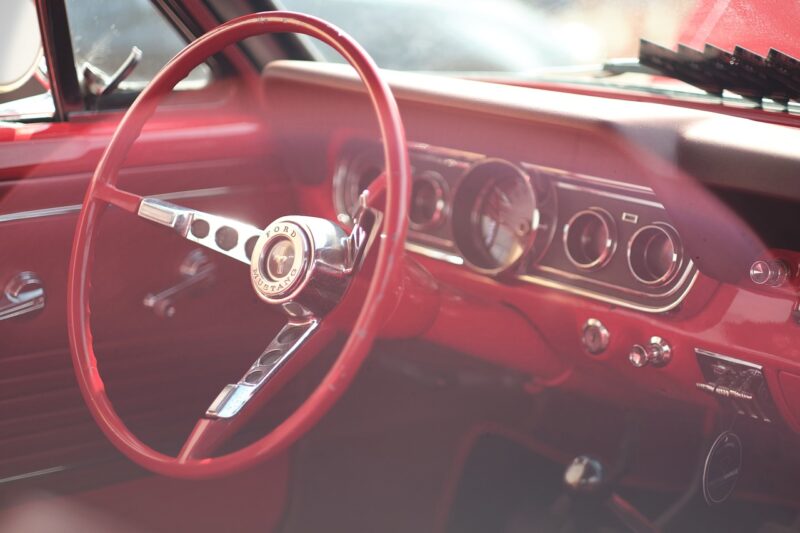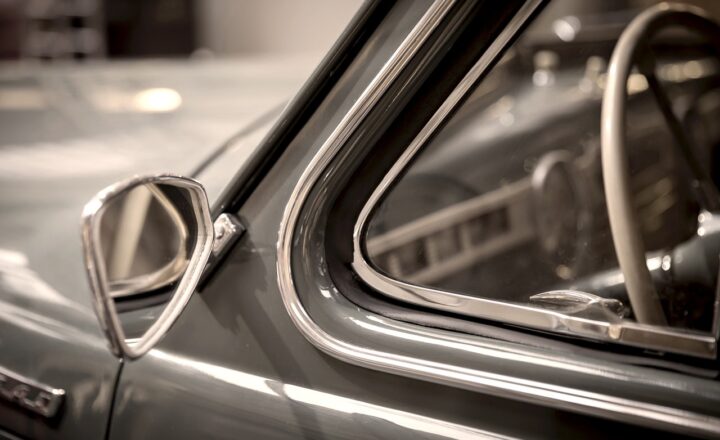How the Ford Mustang Became the Ultimate Symbol of American Muscle Cars
November 18, 2024

The Ford Mustang is not just a car; it’s an emblem of freedom and power that has captured the hearts of automobile enthusiasts and casual drivers alike since its introduction in 1964. With its sleek design, roaring engine, and cultural significance, the Mustang has solidified its place in the pantheon of America’s automotive legends. This article explores the history, design evolution, and cultural impact of the Ford Mustang as the ultimate symbol of American muscle cars.
1. The Birth of a Legend
The origins of the Ford Mustang can be traced back to a vision that would forever alter the landscape of American automobiles. In the early 1960s, Ford’s management, led by Lee Iacocca, identified an emerging market for sporty, affordable cars aimed at younger buyers. The idea was to create a vehicle that combined power, speed, and style without the hefty price tag that usually accompanied performance cars.
In April 1964, at the New York World’s Fair, the Mustang made its public debut. Known for its long hood, short deck, and sporty lines, it captivated the audience. It was advertised as a car that offered unique personality, with options for customization that appealed to the bohemian spirit of youth at the time. Soon after its release, the Mustang was quickly dubbed a muscle car, a term that defined powerful, high-performance vehicles.
2. The Mustang’s Design Influence
The Mustang’s design was revolutionary for its time. Its classic long hood and short rear model established a formula that many competitors would later replicate—a design ethos that encapsulated the essence of American engineering. Designed by the talented team at Ford, including Joe Oros and Gale Halderman, the Mustang’s body style catered to performance while maintaining a fashionable appeal.
Innovative features, such as the option for vivid color palettes and sporty stripes, made the Mustang accessible to a broad audience. Its interior was designed with comfort and style in mind, accommodating both driver and passenger with simple yet elegant instrumentation. The Mustang’s design was not merely functional; it became a work of art that thrummed with the spirit of freedom and the open road.
3. A Powerhouse Under the Hood
While the Mustang’s looks were striking, its engineering was equally impressive. The car was available with a variety of engine options that appealed to different driving styles—from thrifty inline-6 engines providing good fuel economy to potent V8 engines offering heart-pounding acceleration.
The introduction of the iconic 289 cubic inch V8 engine became a talking point. Coupled with a lightweight design, it provided the Mustang with muscle car performance at a fraction of the cost of traditional high-performance cars. Its capability on the track further solidified the Ford Mustang’s reputation, winning races and earning respect among car enthusiasts.
4. Cultural Impact and Legacy
The Ford Mustang transcended its role as a mere automobile—it became a cultural icon. Throughout the late 1960s and early 1970s, it appeared in countless films, music, and television shows, symbolizing the youth’s desire for adventure and rebellion. Classic films like “Bullitt” (1968) starring Steve McQueen showcased the Mustang’s prowess and helped cement its status in popular culture.
The Mustang was also prominent in the rock and roll culture of the 60s and 70s, becoming synonymous with freedom and the American highway. As such, it stood as a symbol of a generation seeking to break the mold and discover a world beyond their suburban confines.
5. The Mustang’s Evolution Over the Years
As the decades progressed, the Ford Mustang evolved stylistically and technologically. From the iconic first-generation models of the 1960s, through the oil crises of the 1970s that forced a shift towards fuel efficiency, to the return to performance in the late 1980s and beyond, the Mustang adapted while retaining its core identity.
Today, the Mustang has embraced modern engineering without losing the spirit that made it an American classic. Innovative technology like turbocharged engines, advanced safety features, and modern infotainment systems reflect the changing needs of drivers. Yet, the raw power and styling continue to resonate with those who yearn for that timeless American muscle car experience.
6. The Ford Mustang in Today’s Market
In recent years, the Mustang has solidified its position as a staple in the automotive market. With limited-release models like the Mustang GT350 and the electric Mustang Mach-E, Ford is blending tradition with innovation. The Mach-E, an all-electric SUV, highlights Ford’s commitment to sustainability while maintaining the Mustang’s brand essence, showing versatility in the face of a changing automotive environment.
The latest models continue to capture the hearts of new generations and longtime enthusiasts alike. Ford has successfully launched a global campaign around the Mustang brand, allowing it to inspire and bring together communities of car lovers worldwide.
Conclusion: A Testament of American Spirit
The Ford Mustang is more than just a car; it embodies the spirit of America—freedom, innovation, and the relentless pursuit of adventure. Its legacy as the ultimate symbol of American muscle cars is unparalleled. As the Mustang continues to evolve, it stands as a testament to its rich history, enduring popularity, and a future that promises to combine tradition with modernity.
With each passing year, the Mustang retains its status as a classic while embracing new technologies and trends. It remains a vehicle that captures the imagination of countless enthusiasts and casual drivers alike, proving that the roar of the Mustang engine will resonate for generations to come.







